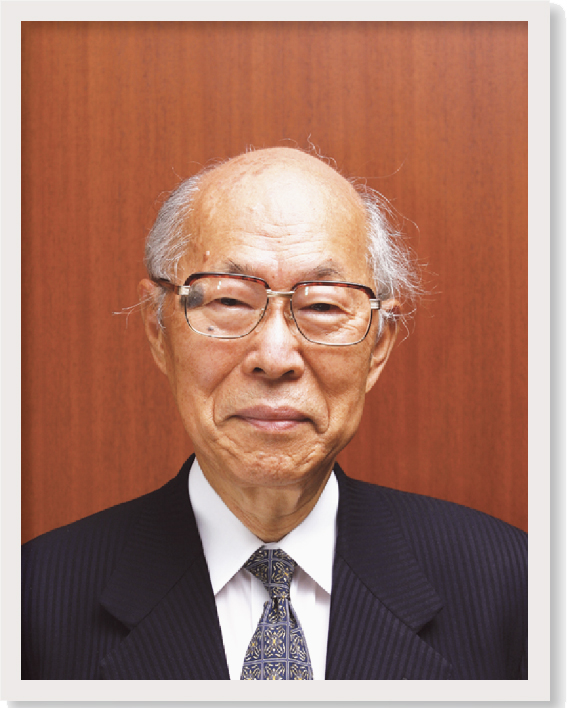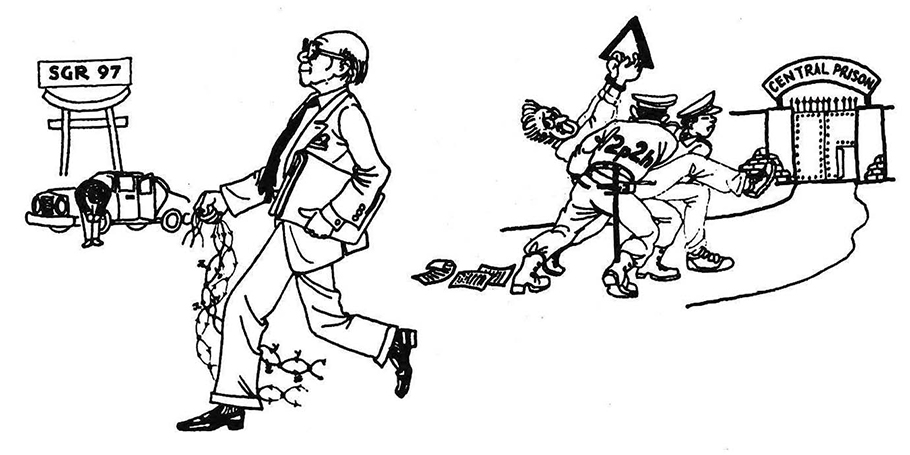Disclaimer: machine translated by DeepL which may contain errors.
Special Article: In memoriam, Akito Arima, Emeritus Professor, The University of Tokyo
| Akito Arima
|
 The late Mr. Akito Arima |
In Memory of Dr. Akito Arima
|
I am deeply saddened by the passing of Dr. Akito Arima. The last time I met Dr. Arima was in September 2020, when he was in good health, and the news of his passing came as a complete surprise to me.
I first met Dr. Arima in April 1985, when I had just entered my third year of Faculty. At the time, Dr. Arima was the Dean of the Faculty of Science and was busy teaching a course on physics and mathematics (group theory) to third-year students. I still vividly recall the unique tension in his lectures. One of the reasons was that he would look for sleeping students and say, "Hey, you there! It would be a waste if you don't stay awake since you are in the lecture. He himself was a struggling student, and it was difficult for him to make time to attend lectures. Another reason for the tension was that he asked students to answer the binding energy of a hydrogen atom, 13.6 eV, which was not directly related to the content of the lecture. He told the students, "This is the most basic of the basics, so you should remember it. Looking back on his lectures now that I am in the position of teaching students, I realize once again that his lectures were filled with love for young students.
In my third year of Faculty, I had a "confrontation" with Dr. Arima, where he taught me how to use numbers to make an argument. The scene of the confrontation was a negotiation between the Dean of the Faculty of Science and the Faculty of Science Student Government Association. The heat of the school dispute had already cooled off, and the main topic of negotiations was demands for improvements to university life, such as "a shower room. The professor raised his voice, "Do you really want it? He asked us to do his homework, saying, "If you are serious, show us the need for it quantitatively," and we had to come back.
It is a great loss for Japan that Dr. Arima, who loved physics, loved young people, and was concerned about the future of science and technology in Japan, has passed away. I would like to express my deepest condolences and respect for his guidance in a wide range of fields.
Dr. Akito Arima "imprisoned
|
Dr. Akito Arima was imprisoned at the "International Conference on Nuclear Spin Excitation" held in Colorado, USA in 1982. At the summary of the conference, Dr. E. Vogt, Director of TRIUMF Institute in Canada, projected a portrait of Dr. Arima on the screen and humorously showed a stack of iron bars, saying, "The interpretation that Dr. Arima insists is outdated and it is time to accept the modern interpretation based on quarks. The figure on the lower right is a reproduction of the scene as it appeared at a later date.

In the 1970s, the spin giant resonance state of nuclei was discovered. The problem was that the magnitude of the resonance state (sum of transition intensities) was experimentally observed to be only about half of the value predicted by quantum theory. Since the transition strength does not disappear in the quantum theory, the missing transition strength problem became a major puzzle. To explain this, A. Bohr (Aage Niels Bohr) and B. Mottelson (Ben Roy Mottelson) proposed a theory that this missing problem could be solved by considering even the spin excited states of nucleons themselves, called delta particles, which reflect the quark structure of nucleons. The long-awaited quark effect. Many nuclear scientists agreed with this interpretation of the long-awaited quark effect. The international conference was held under these circumstances. Dr. Arima took the podium on the first day of the conference and argued, differently from Bohr et al., that a detailed analysis of the magnetic moment shell model showed that quarks were involved in at most 10% of the transitions, and that most of the transition intensities should be distributed at higher excitation energies than the resonance state. As a result, Dr. Arima was under siege by the tremendous criticism from the audience. This excited atmosphere was expressed in Mr. Focht's summary and illustrated in the figure on the right. Even after this, Dr. Arima continued to struggle on his own and to assert his theory all over the world.
 Figure: Illustration reproduced later by Nguyen Ding Dang (upper right) and the scene of his release (above) newly drawn at the request of Professor Glasshauser.
Figure: Illustration reproduced later by Nguyen Ding Dang (upper right) and the scene of his release (above) newly drawn at the request of Professor Glasshauser.(Nguyen Ding Dang, International Symposium on Spin Giant Resonance, Tokyo, 1997)
In the 1990s, the Sakai group at the University of Tokyo constructed a fast neutron experimental facility at the Research Center for Nuclear Physics (RCNP), Osaka University, and obtained high-quality data for a wide range of excitation regions including spin giant resonance states. From detailed data analysis, they found that about 40% of the transition intensities (90% in total) are widely dispersed in the region above the excitation energy of the spin giant resonance. This finding solved the "transition strength deficit problem" and proved that Dr. Arima's claim was correct. In 1997, the "International Symposium on Spin Giant Resonance" was held at the University of Tokyo. In the summary of the symposium, Professor C. Glashausser of Rutgers University congratulated Dr. Arima by showing an illustration of his release from prison (see below).
Even though he became busy with other things besides his research, Dr. Arima always continued his research even as he grew older. Although his research field differed from theory to experiment, I learned a lot from his attitude as a researcher. The busy but fulfilling days spent preparing for the international conference mentioned above are one of my unforgettable memories and treasures of Dr. Arima. I sincerely pray for the repose of Dr. Akito Arima's soul.
Published in Faculty of Science News March 2021


